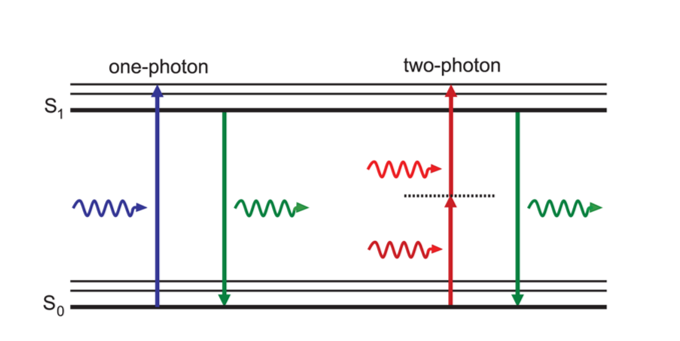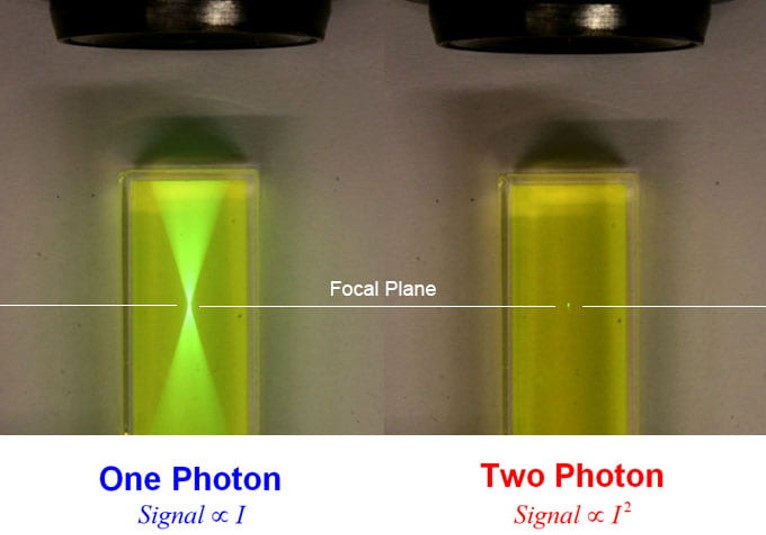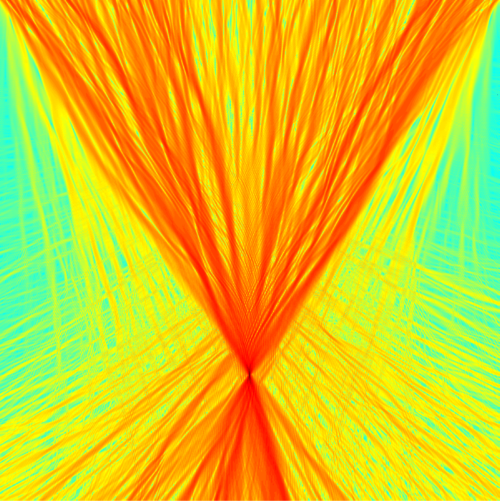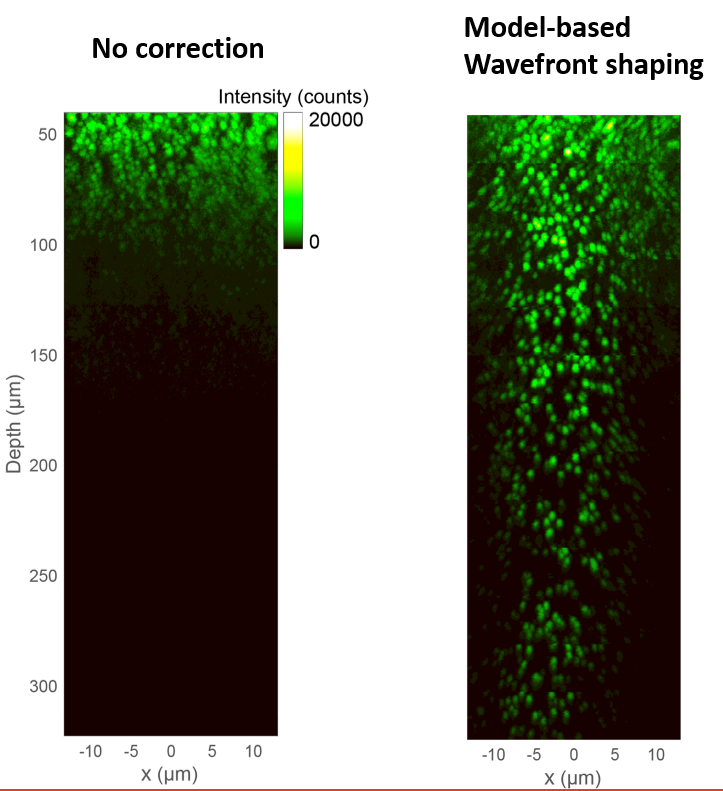General
Our homebuild Two-Photon laser scanning microscope is an advanced imaging tool used in biological and neuroscience research. It uses high-intensity infrared laser pulses to excite fluorescent molecules within living tissues, allowing for the visualization of fine details deep within the sample. This imaging technique provides higher resolution and less photodamage than traditional confocal microscopes. The Two-Photon laser scanning microscope is a powerful tool for studying the structure and function of living tissues, including the brain, and can help to advance our understanding of complex biological systems.


One of the key advantages of the Two-Photon laser scanning microscope is its ability to perform deep tissue imaging. Unlike traditional fluorescence microscopy techniques, Two-Photon microscopy allows for imaging of samples several hundred microns deep within tissues, making it an ideal tool for studying the structure and function of complex 3D biological systems such as the brain or organs. This makes it a valuable tool in neuroscience research, where deep tissue imaging is essential to understand the functioning of neural circuits and systems.
Wavefrontshaping

In addition to its ability to perform deep tissue imaging, our Two-Photon laser scanning microscope also features a wavefront shaping module. This module uses advanced optics to correct for scattering and other distortions in the tissue, which can limit the depth of penetration of the laser. By compensating for these aberrations, the wavefront shaping module allows for even deeper imaging into samples, making it possible to visualize structures and processes that were previously inaccessible. The wavefront shaping module thus enhances the capabilities of our Two-Photon laser scanning microscope, enabling researchers to investigate even more complex biological systems.

